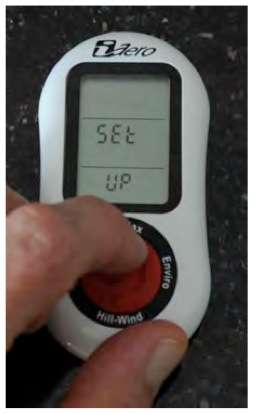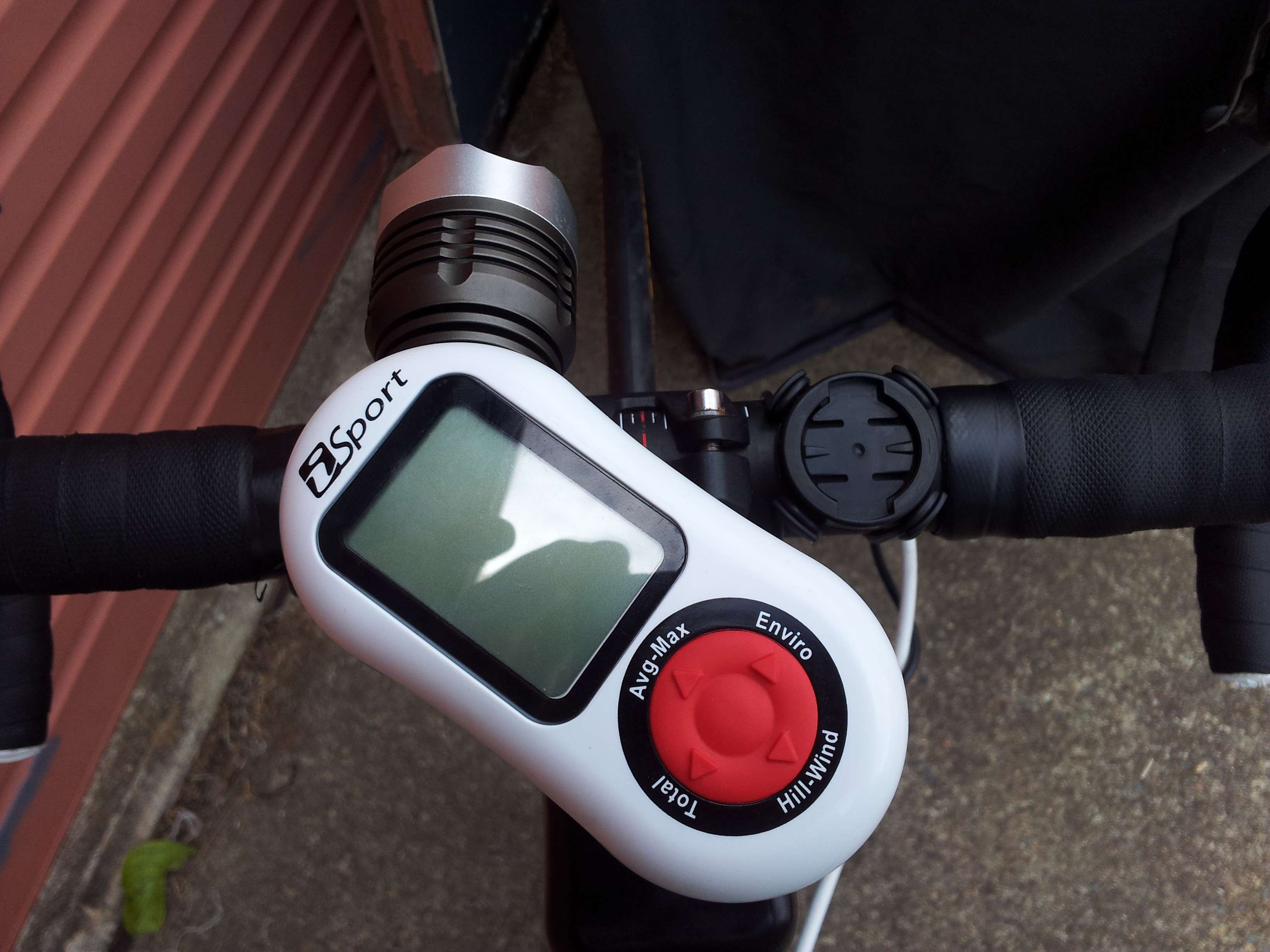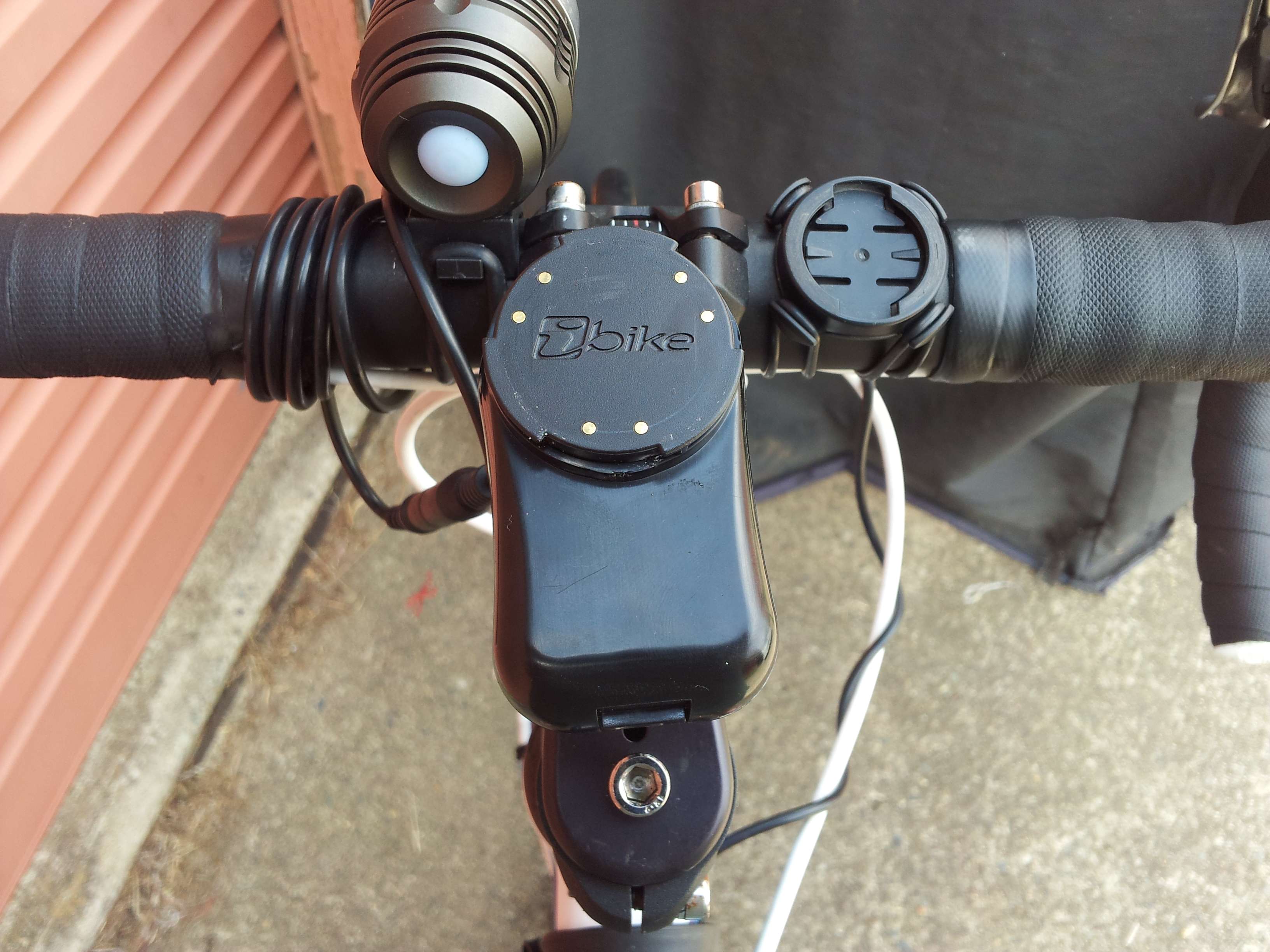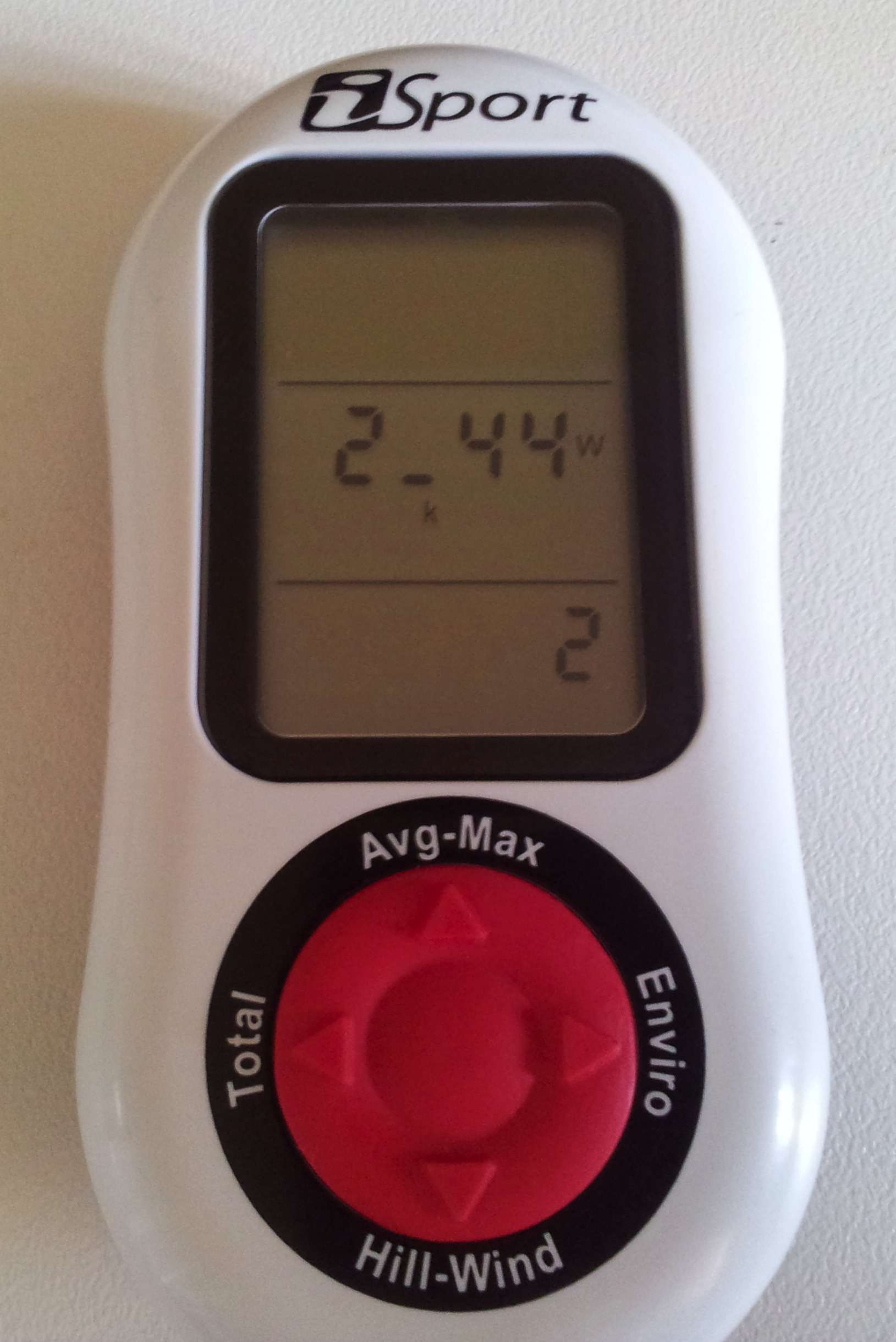Part 2 of the iBike iSport Review. Part 1 is here.
Set up.
Setting the iBike iSport up is done in two parts. Setting the unit itself up and mounting it to the bike.
Lets look at setting the unit up. The iBike iSport is powered by a CR2032 battery. Installation of that battery is a doddle. Use a coin to open the battery door, put the battery in and close the door with a coin. The unit then powers up. To go to the set up menu you hold down the UP arrow for 2 seconds.

In here there is a fair bit of information to give the unit. The normal things like wheel circumference and unit preference, metric or imperial. There are also other inputs like weight, height and riding position. These help to estimate your aerodynamic drag. Next, you do a TILT Calibration. This helps to give the extremely accurate gradient measurements. The tilt calibration is easy. Just sit the bike somewhere that you can turn it 180 degrees easily and then it is just a matter of holding the bike still whilst you face it forward, then swing it 180 degrees and hold it still again. Once you are prompted, you swing it around 180 degrees again and wait for the prompt. Next up is the wind calibration. That just means getting the bike into a wind free environment. Like, a garage. Once you have the wind calibration done, it is time to get on the bike and do the ride calibration. I will look at the calibration ride a little later.
Now, onto mounting the unit. This, wasn’t as straight forward. As I said in the earlier review, I got the Rechargeable mount option. This mounts to the stem. Installation seems easy enough. An allen key and you can pull out the existing stem cover and replace with the iBike stem mount. Here is a shot of it on the bike.

You then place the iBike iSport onto the mount at an angle like below.

Then, twist to get it all locked in.

Hmm, that seems to be a bit off centre. It is, by more than you can see in that photo. The locking system has what seems like a double click lock. When you twist it on, there is a tactile click, and then another one. If I leave the unit at the point where it clicks once, it is nearly perfectly lined up. When I click it the second time, it is off centre. I have looked at the literature that was sent with the unit and I can’t find any mention of this. It certainly feels more secure with the second click. To get around this, I have had to set the mount up at a slight angle to offset it.

This certainly isn’t a deal breaker, but it is frustrating that for a product worth this much, you have to do it at all.
So, once it is mounted, you are ready to go. On to usage.
Usage.
The iBike iSport has 5 buttons. A centre button that acts like an Enter Key for most inputs, and four arrow keys. Up, down, left and right. To turn it on, you hold down the centre button to wake the unit up. It is a pity turning it off isn’t that straight forward. The unit will blink to life and do a battery check. I assume this checks the level of the battery in the unit itself, not the rechargeable mount, but I am not sure about this. I will ask a question on the iBike forums. You will either get a battery Good or Bad message. If all is good, then it does a wind calibration. If you are outside, it is suggested you cup your hand over the wind port to block any wind from hitting the sensor.
Once the wind calibration is done, the unit should find all your ANT+ sensors. The first time I had mine on the bike it didn’t find the Speed/Cadence sensor. I had to get the unit to do a scan. Once that was done, all my sensors showed up and the unit now remembers them.
The calibration ride is pretty straight forward. This from the user manual.
The Calibration Ride improves the accuracy of your wind sensor and tilt sensor, and also improves the accuracy of your estimated aerodynamic and frictional drag coefficients.
The Calibration Ride is 2 miles (3.2 KM) long. The cyclist rides one mile out, then turns around and rides back on the same road.
It was off for the calibration ride. The first one was aborted when the heavens opened up. So another day and it was all done. The calibration ride is just an easy dawdle out for 1 mile, 1.6kms, then you turn around and complete the ride back. It then does all the black magic and gives you a whole stack of numbers to do with aerodynamics and god knows what else. I was just happy the unit was ready to use.
The first ride out I made the mistake of watching my power figures. I spent the best part of 2 hours thinking “I can put more power out than this!” It is quite surprising the first time you use it just how quickly your output can change. Pulling up a 5% hill and when I pushed I was pushing out 500+ watts. Then cruising down the other side, whilst pedalling, 30 watts.
Numbers. I love numbers and statistics, so having another variable to track was great. Actually getting the numbers out of the unit wasn’t as intuitive as I thought it would be. Just now, after 12 hours of usage I am pretty comfortable with the interface, but it was a little daunting at the beginning. I would scroll through a couple of screens of data and then get lost and not know how to get back to the main screen. It isn’t necessarily a bad system, just not as intuitive as others, like the Garmin Edge 800, that I have used.
After a couple of rides with the new toy, it was time to go out and do the Fitness test. this from the manual…
Your iBike includes a built-in, power-based fitness test that measures your cycling fitness. It is a very simple test: you ride as hard as you can for 20 minutes. Then, the iBike computes the average watts you held during the test, divided by your body weight in KG.
This “Watts per kilogram” ratio is a simple and critical measure of cycling fitness. Simply put, the higher your watts per kilogram the more fit you are and the faster you’ll go.
Also, the average watts held during the Fitness Test, times the multiplier of 0.95, is an excellent measure of your Functional Threshold Power (FTP). FTP is used by most experts
as a key measure of your overall aerobic limit and cycling fitness.
The iBike firmware includes a table developed by professional racer and noted cycling coach Boyd Johnson that interprets your W/KG score as a fitness level from one to ten.
Your fitness level is based on your W/KG measurement and your sex. Here is the table that is loaded into the iBike firmware:

Now I will be honest, I had no idea where I thought I would score for this test. I was averaging roughly 200 watts over 2 hour rides for the first couple of times out, but I wasn’t killing myself. I was going to have to average nearly 280 watts for 10 minutes to score a 3 on the fitness test. It is suggested to find a nice flat area to pedal flat out for 20 minutes. it is in bold in the manual. You need to be pedalling during the entire test. I knew just the place. Off I went. I went out pretty hard and the heart rate was hovering around 170 for the first 10 minutes, then I pushed harder. I had miscalculated how far I would get in the 20 minutes and at one point I had to slow to take a corner and wait for a car to pass. I blame this for the result.

I scored a 2.44w/kg for the test, which you can see from the table above and the photo of the meter, got me a fitness rating of 2! There is no place to hide, the iBike had found me out. I will keep doing the test once every month or so to see how my fitness progresses. One of the really clever things about the iBike iSport is the built in Pre-Programmed Fitness Workouts. You can use the fitness level you achieved to help you to improve either your cardio, strength or fat burning. I will review these at a later date. Hopefully when my fitness level is above 2.
So that is about it. It probably reads a bit like a Jeremy Clarkson Top gear review. Starting out negative, but in the end I love the unit. I love how it is so accurate and fast with gradients on climbs. I love that I can see when I putting out good power and not killing myself. I love knowing what speed the headwind I am riding into is. And even though it has told me I am a fat pretender, I love that it will help me to become a fitter cyclist.
The iBike iSport is far from perfect, but at this point in time, I am glad I have it. Whether I become a better cyclist because of it, time will tell.

Pingback: Review : iBike iSport Cycling Power Meter. The Purchase. | Non Pro Cycling
How do your power outputs compare to what Strava makes up?
From the little research I have done into it, Strava is very conservative.
Hey norbs,
What’s with the other handlebar mount, is that for your Garmin800?
What’s with the wired connection?
Also how many data fields can be set on the iSport screen?
Finally Did you get to the bottom of the offest recharcheable mounting issue to have the unit inline with the stem?
Seems a very strange design fault that is not very Euro cool…. :sigh:
Hi Norbs,
It’s great to see write ups of kit like this. I’ve had an iBike for a couple of years and have had a bit of a roller coaster, love-hate experience with it. (We’re in a period of renewed romance at the moment).
I’ve never been clear if the current iBike firmware outputs the power data to Garmin devices or not, but as your data is on Strava and you bought an iSport I’m guessing it does. Am I right?
Cheers,
Sam.
Yes Sam, the iBike is ANT+ compatible, so it sends the data straight through to the Garmin Edge 800.
Love hate is right. Mine is currently driving me bonkers. They don’t like the rough roads that I ride on. It is driving me mad.
Hi Norbs,
I just got a Garmin & my iBike doesn’t send power data to it. Confused I emailed iBike and got a lovely clear reply from John Hamann:
“Our GT version is the same price as the wireless Gen III.
The Gen III version ships with wireless sensors but without the GT key.
The GT version ships with the GT key but without the wireless sensors.
So, if you want to upgrade your Gen III to send power data to your 910XT, there is a $99 charge for the GT key.”
It’s only a minor thing for me. I was just confused why it didn’t work, so now we know!